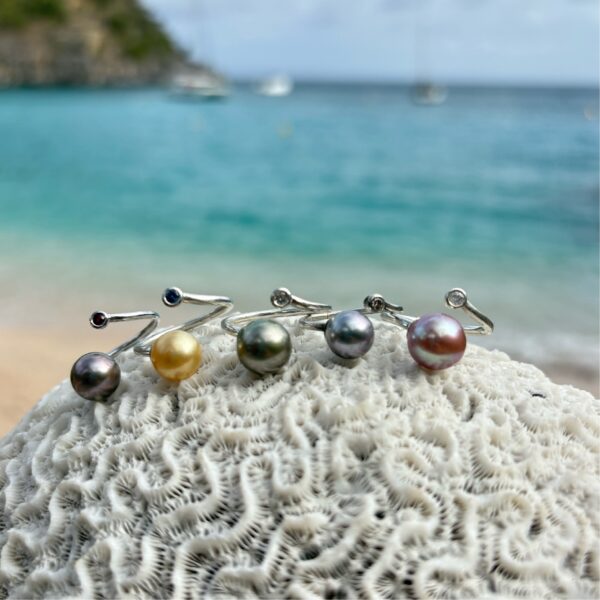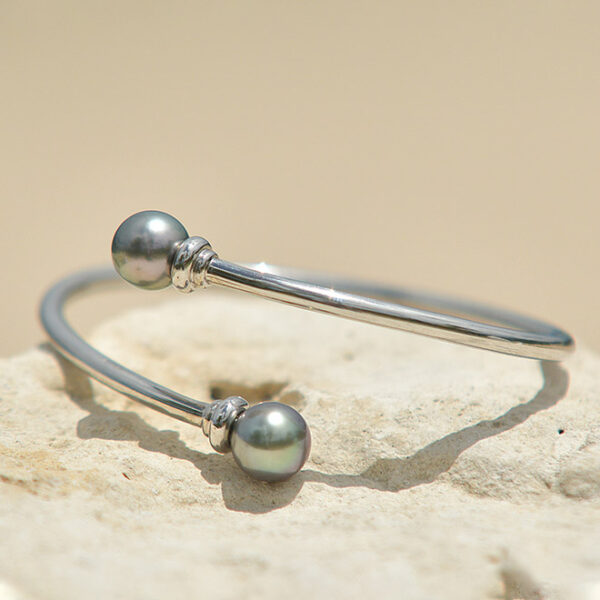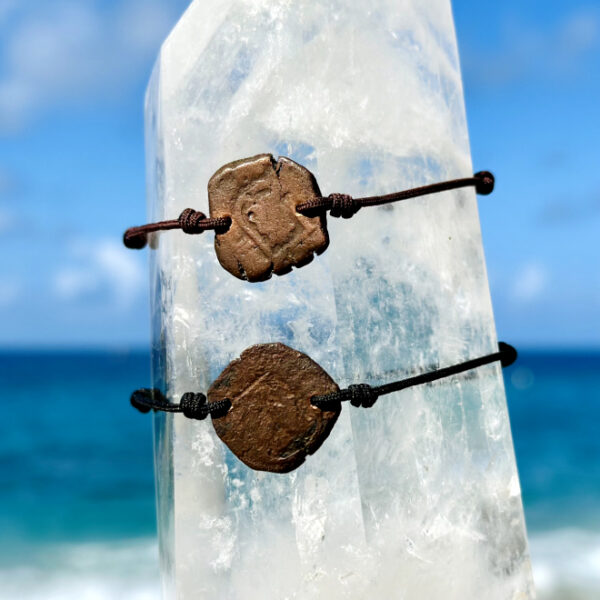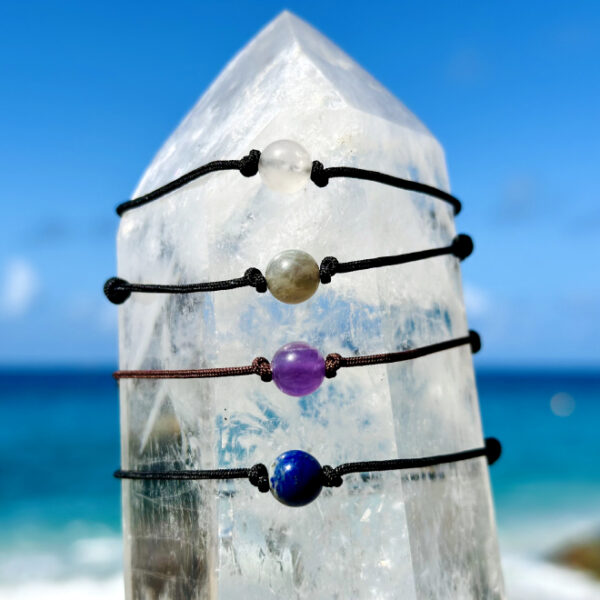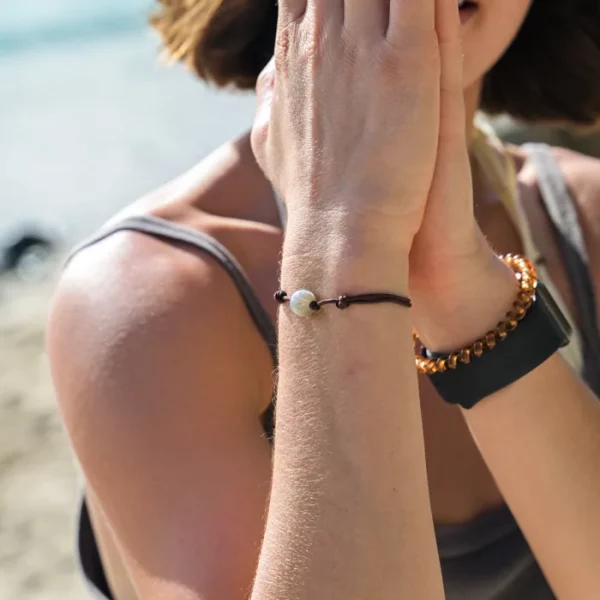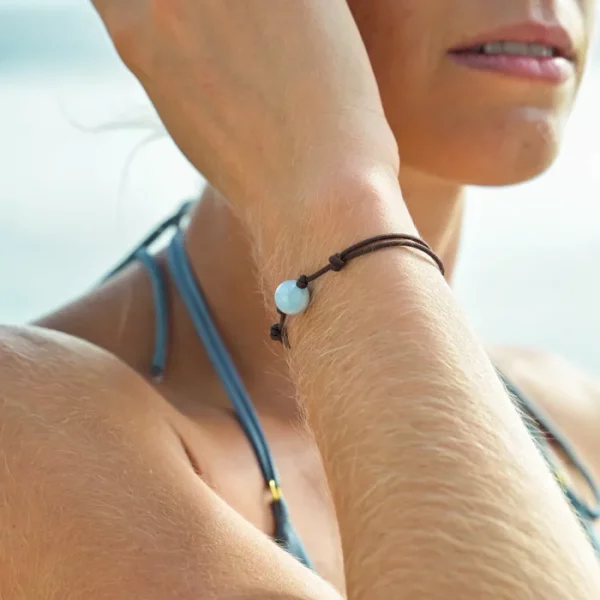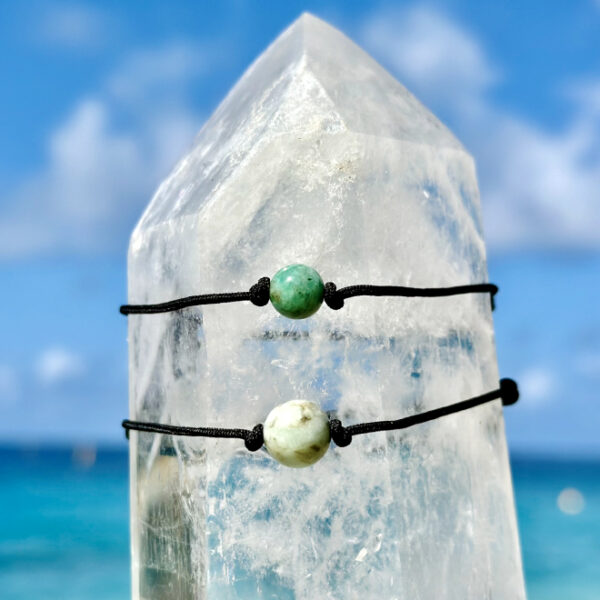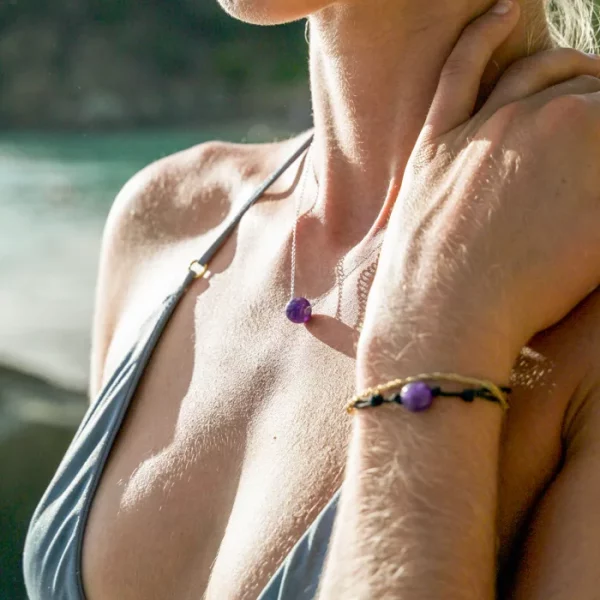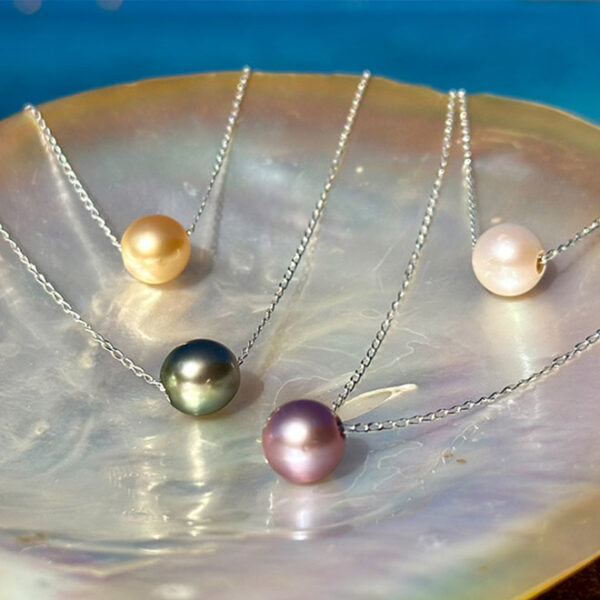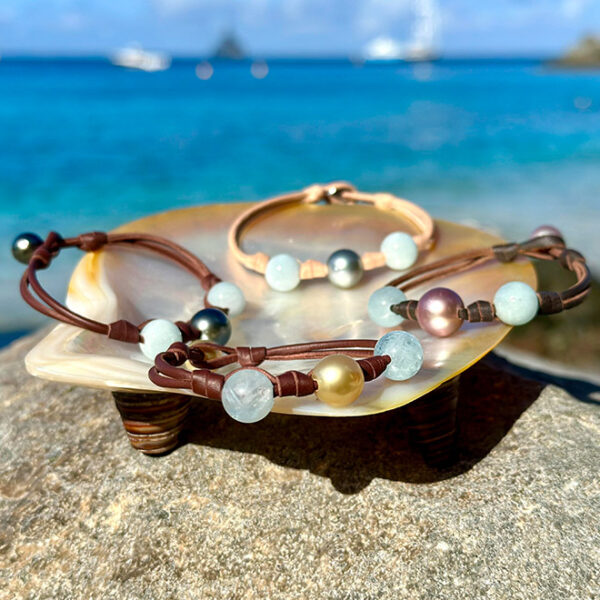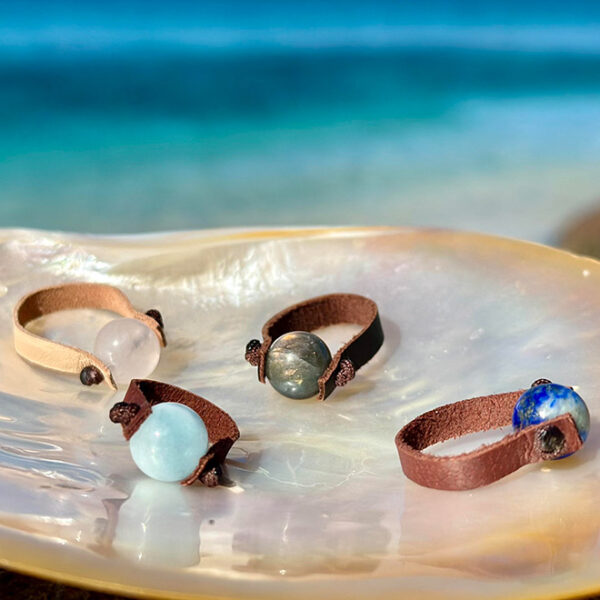You've added...
The history of pearl jewelry in fashion
Publié le 23/09/2024
For many years, wearing a pearl necklace was considered a sign of belonging to a certain social class. Pearls were seen as precious stones accessible only to the wealthiest. Does that seem elitist? Well, yes, but it makes sense given their history. What is the history of pearl jewelry? How did they become timeless over the years?
The Discovery of Pearls
Officially the oldest gemstone in the world, pearls have been revered long before written history. For this reason, their discovery cannot be attributed to one particular person. It is believed they were first found by people searching for food along the seashore. It is known that pearls were worn as jewelry for millennia, thanks to a fragment of pearl jewelry found in the sarcophagus of a Persian princess dating back to 420 BC, now displayed at the Louvre in Paris.
Pearls were presented as gifts to Chinese royalty as early as 2300 BC, while in Ancient Rome, pearl jewelry was considered the ultimate symbol of wealth. Round pearls were so valuable that in the 1st century BC, Julius Caesar passed a law limiting the wearing of pearls to the ruling classes only.
The abundance of natural oyster beds in the Persian Gulf meant that pearls were also highly valued in Arab cultures. Legend said that pearls were formed from dewdrops swallowed by oysters when they fell into the sea. Before the advent of cultured pearls, the Persian Gulf was at the heart of the pearl trade. It was a source of wealth in the region long before the discovery of oil.
Pearls: A Symbol of Wealth and Royalty
Remember, the first discovery of pearls dates back to 420 BC in the sarcophagus of a Persian princess. They were also reportedly presented as gifts to Chinese royalty in 2300 BC! Furthermore, Julius Caesar famously passed a law in the first century BC stating that pearls could only be worn by the ruling class.
It wasn’t until Kokichi Mikimoto discovered how to create pearls in 1893 that these gems became more accessible. Naturally occurring pearls, or “natural pearls,” are incredibly rare and thus extremely valuable. By 1935, Japan had 350 pearl farms producing 10 million pearls annually.
Moreover, in early modern history, pearls continued to be regarded as a status symbol. Coco Chanel’s iconic 1936 portrait with several pearl necklaces draped over her shoulders is an example. It exuded what she and her brand would come to represent: luxury. When Audrey Hepburn played Holly Golightly in *Breakfast at Tiffany’s* in 1961, her portrayal of a wealthy socialite included a black Givenchy evening dress, opera gloves, and four pearl necklaces joined by a decadent pendant.
Even when Frances Sternhagen played Bunny MacDougal in *Sex and the City* from 2000 to 2002, she was never seen without her pearl necklace, which perfectly complemented her Chanel suit collection. But Alber Elbaz changed all that. At the height of his 14 years at the helm of the French luxury house Lanvin, he rethought the gemstone and upended its reputation at the Fall/Winter 2013 show by adorning layers of imitation pearls with ribbon and stacking them with chains.
Myths and Legends Surrounding Cultured Pearls
With such a long and ancient history, it’s no wonder that over time, pearls have become shrouded in myths and legends. In ancient China, cultured pearl jewelry symbolized the purity of the wearer. Meanwhile, during the Dark Ages, knights often wore pearls into battle, believing the gemstones would keep them safe.
According to legend, Cleopatra crushed a pearl in a glass of wine to prove to Marc Antony that she could serve the most expensive dinner in history. Pearls have been a significant trade item since Roman times, and the discovery of pearls in Central and South America during the 15th and 16th centuries led to the so-called Pearl Age.
With the growing demand for pearls in Western Europe, where noblewomen and royalty wore elaborate pearl necklaces, earrings, bracelets, and brooches, by the 19th century, the demand for pearl jewelry became so high that oyster supplies began to dwindle.
Pearl Harvesting: Between Natural Product and Extreme Rarity
Unlike gemstones mined from the earth, a living organism produces a pearl, and in fact, their very existence is a phenomenon of nature. A pearl forms when an irritant, such as a parasite or a piece of shell, accidentally becomes lodged in the soft inner body of an oyster. This causes the oyster to secrete a crystalline substance called nacre, which builds up around the irritant in layers until a pearl is formed. Cultured pearls are formed in the same way, with the only difference being that the irritant is implanted into the oyster rather than entering by chance.
Until the early 20th century, the only way to collect pearls was to have divers risk their lives by diving to depths of up to 30 meters to retrieve pearl oysters. It was a dangerous pursuit with limited chances of success, as one ton of oysters would yield only three or four quality pearls. Freshwater mollusks living in shallow rivers and streams were easier to gather, but these pearl beds were often reserved for harvesting by royalty.
Natural Pearls at Auction
Today, natural pearls are among the rarest gemstones, and their supply is almost entirely depleted, meaning they are only rarely found in the seas off Bahrain and Australia. The rarity of natural pearls is reflected in the prices they fetch at auction, with antique pearl necklaces and earrings selling for record sums.
Last year, a pair of natural pearl earrings—on the left—that once belonged to Empress Eugénie of France, wife of Napoleon Bonaparte, set a new world record by selling for $3.3 million at Doyle New York. Intense bidding wars have also erupted over high-quality natural pearl necklaces, with winning bids reaching several million dollars.
Elizabeth Taylor’s famous 16th-century La Peregrina pearl sold for $11.8 million, demonstrating its immense value. Unlike indestructible diamonds, the formation of natural pearls depends on clean seas and stable temperatures, both of which have been destabilized by pollution and climate change. Almost all pearl jewelry on the market today is made from cultured pearls.
Kokichi Mikimoto, the son of a Japanese noodle maker, created the world’s first cultured pearl in 1893 by manually introducing an irritant into an oyster to stimulate it to form a pearl. The introduction of cultured pearls in the early 1900s upended the entire pearl industry, significantly reducing the value of natural pearls. By 1935, Japan had 350 pearl farms producing 10 million cultured pearls annually, though Mikimoto constantly had to defend himself against claims that his pearls were not “real.” Scientific evidence proves otherwise; cultured pearls have exactly the same properties as those formed in the deep sea, with the only difference being that they received a little help to start the natural process.
Mikimoto’s Akoya pearls are still used today by the jewelry house that bears his name and are renowned for their brilliant luster and rich colors, ranging from white, cream, and pink to silver rose.
Freshwater and Saltwater Pearls
Pearls can be found or cultivated in either freshwater or saltwater, and there are several types of pearls depending on the mollusk from which they come. Freshwater cultured pearls are produced primarily in China, and due to their abundance, they are more affordable than their saltwater cousins. Saltwater pearls include the aforementioned Akoya pearls as well as Tahitian pearls, which come from Tahiti and other islands in French Polynesia.
South Sea pearls originate from Australia, Indonesia, and the Philippines. This variety is the largest of all pearls and comes in white, cream, or gold tones, with sizes ranging from 9mm to 20mm.
Tahitian pearls, also known as black pearls, include a color spectrum of gray, blue, green, and purple. Colorful pearls were popular among men and women as early as the 17th century, and in recent years, these dark wonders of the sea have experienced a revival, with a new generation of fashion-conscious consumers embracing jewelry featuring colored pearls as a bolder alternative to the traditional white pearl necklace.
Pearls and Fashion: Fascinating Jewelry
In terms of fashion currency, pearls have had a rollercoaster ride, particularly in the second half of the 20th century. In the 1920s, simple pearl necklaces reflected the trend for clean and unpretentious designs. Known as sautoirs, these long necklaces often measured more than 70 cm and were decorated with a tassel as a pendant.
“A woman needs ropes and ropes of pearls,” said Coco Chanel, who was rarely seen without a pile of pearls casually draped around her neck. She shocked society women by mixing real pearls with fake ones and pairing her pearls with casual daywear. Thanks largely to her endorsement, costume jewelry became popular, and many women wore imitation pearl jewelry made from Lucite or glass.
Inspired by Mademoiselle’s love of pearls, Chanel launched a high jewelry collection in 2014 dedicated to the classic pearl. The Perles Swing set, comprising a pearl bracelet, necklace, and earrings, is a surprisingly simple yet elegant combination of South Sea, Tahitian, and freshwater cultured pearls in pastel colors.
Jackie Kennedy is another pearl-wearing icon whose signature three-strand pearl necklace was actually made of imitation gems crafted from glass rather than the real thing. The name Audrey Hepburn is also synonymous with pearls, whether it’s a necklace or a pair of pearl earrings subtly accentuating her features.
Pearl Jewelry in Modern Fashion
Somewhere in the 1980s, pearls gained a reputation for being the preserve of older ladies. But now the tide is turning, and pearls are once again in favor with the fashion set. Several major jewelry houses are highlighting pearls in their high jewelry collections, and they are also being incorporated into contemporary jewelry creations by innovative designers.
As with gemstones, the quality of a pearl is determined by several criteria, including its size, shape, color, and luster. The thickness of the nacre is an important factor to consider, as it not only determines the pearl’s luster but also its longevity. Learn more about how to choose your pearl here.
At Kalinas Perles, we showcase beautiful cultured pearls through our handmade jewelry. If you are looking for authentic Tahitian or Australian pearls, be enchanted by our collection of unique jewelry! Each piece tells its own story through the careful selection of pearls, as well as unique craftsmanship and the use of quality materials. Discover our jewelry collection today!
